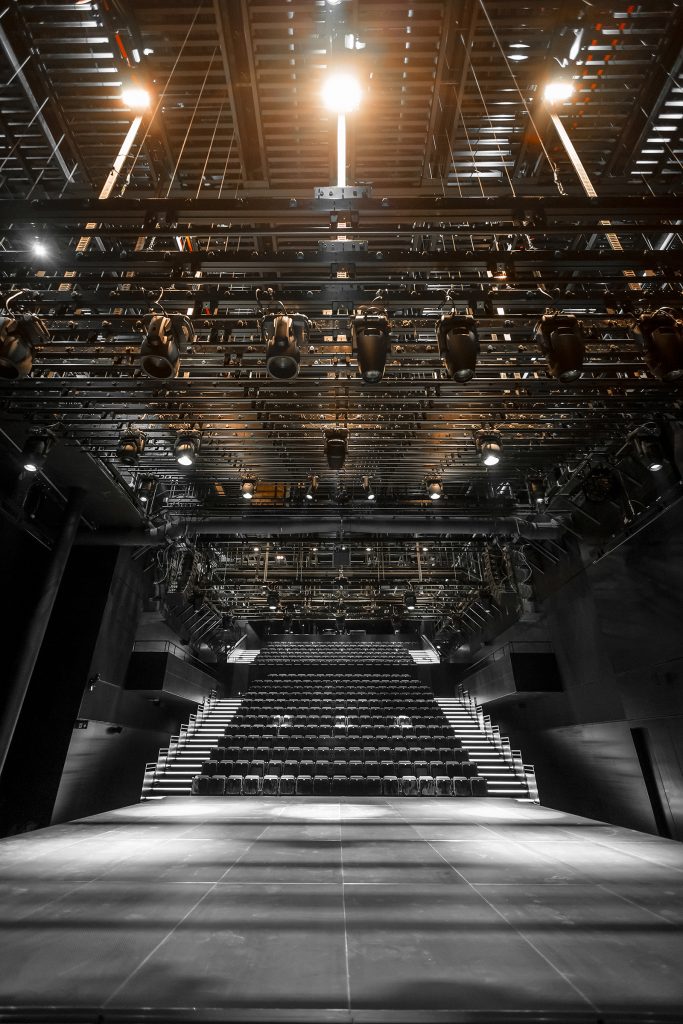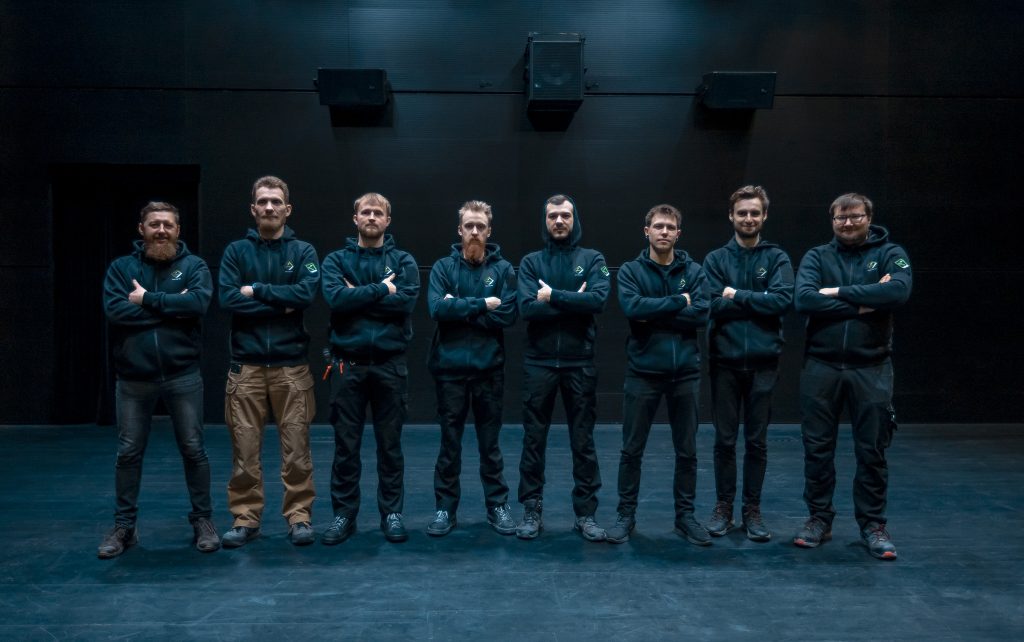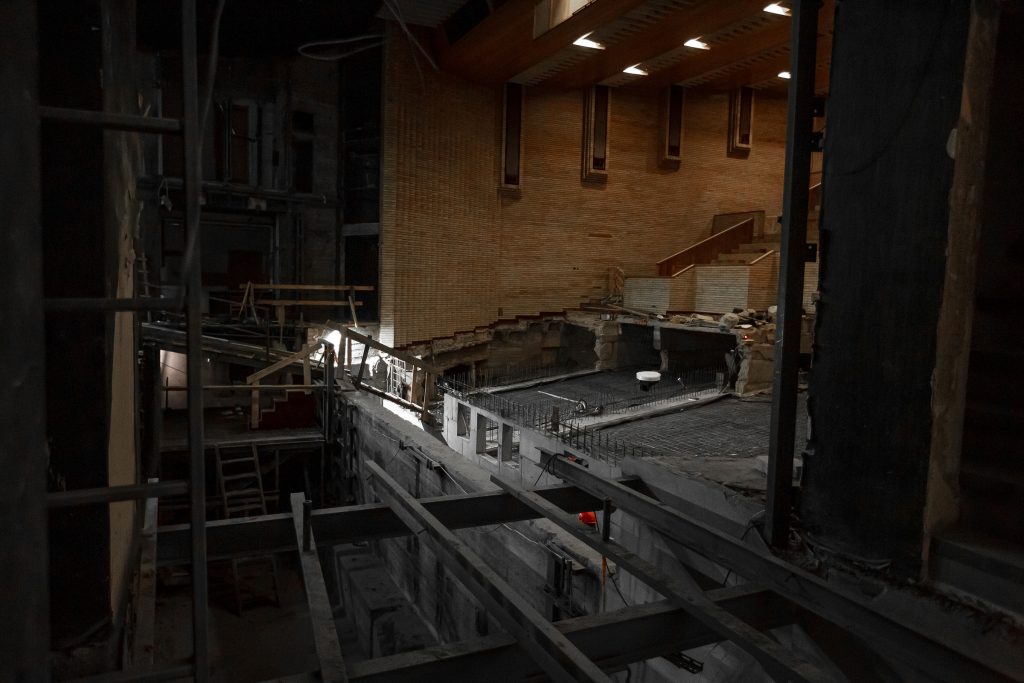Sonus Exsertus specifies AutoRouter to interconnect new auditoria with the old.

The current reconstruction and expansion of the famous Lithuanian National Drama Theater (LNDT) in Vilnius includes a complete sound system makeover, masterminded by Sonus Exsertus.
This €19 million euro upgrade of a building founded in 1940 is its largest in 40 years. Last year a New Hall was opened, followed by a Small Hall for experimental and small-scale productions. With the existing newly refurbished Great Hall, the LNDT—which is one of the country’s foremost publicly funded cultural institutions—this will provide an overall seating capacity of 1200.

Once fully commissioned by the end of summer 2024, the three separate spaces will have their audio interconnected through an Optocore AutoRouter smart fibre patchbay, which will provide enormous routing flexibility in a fully redundant solution.
Sonus were already earmarked for the project’s New and Small halls by the time they took on the regional distributorship of Optocore, back in November 2021.
Since they were already the DiGiCo distributors, part of the attraction was the Optocore console integration, offering remote preamp and SD series compatibility. According to Sonus Technology Engineer and Service/Support Manager, Darius Valikonis, all three halls are equipped with DiGiCo consoles in the control positions and SD-Racks. The Small Hall boasts an SD9 console at FOH with the Meyer Sound PA connected through DiGiCo SD-NANO Racks (with an additional large SD-Rack on stage). In the New Hall an SD12 has been detailed at FOH, and in the Great Hall, the FOH console is a DiGiCo Quantum 338—all supporting the Optocore protocol, with the PA again connected through the Nano racks but with two SD-Racks at the stage end, since more inputs and outputs are required in the main space.
Explaining the background to the contract, Valikonis confirms that Sonus approached the project virtually as a new-build, since the theatre was under complete reconstruction. “The system was really old as the last major upgrade of the main auditorium was in 2009—and although the machinery and mechanics were upgraded the sound or lighting systems weren’t.”
Exercising caution, he emphasised that the three halls would be on standard, cost-effective ST fiber connectors, and remain “physically disconnected” from each other until final commissioning. It will then offer full bidirectional signal transport with all halls connected internally by Optocore optical loops, with the fibres terminated at the main server room where the Optocore AutoRouter is situated.
Darius Valikonis confirms that the venue-wide routing of signals had been one of the core requirements—enabling the sound to be sent in different directions to the audience. “AutoRouter is a very good system because you can operate in one venue and if you need different inputs or outputs from the other venue, it’s possible to do big events in two or three different places, interconnecting between them.”
Compatible with stand-alone Optocore networks, DiGiCo fibre loops and other protocols that support single- or multi-mode optical fibre, what AutoRouter does is create an intelligent star out of an Optocore fibre loop topology, closing the loop automatically between active devices and mobile stage boxes. Thus there is no longer the need to patch cables manually, as this intelligent patchbay will automatically detect active devices and form a loop topology to establish redundancy, without user interaction. This speeds up system layout and configuration for any production, as Darius Valikonis notes.

“The main benefit of AutoRouter,” continues Darius, “is that in the New Hall and Great Hall there are at least two possible points where the sound engineer can place the mixing console, so there is no need to do any additional patching or connecting … you just disconnect from one place and reconnect and you are in the loop—therefore it’s much easier and faster for the user. The equipment is very easy to use and no set-up is required; you just need to make sure there is a good connection for the optical fibre and then it’s just plug and play.”

This agile solution in a building that has also been treated acoustically, had been one of the challenges that the integrators managed to overcome. Another, according to Sonus Head of Technology, Mindaugas Indrašius, had been how to integrate all this modern technology into the historical spaces of the theatre, included in the protected heritage and decoration features, without compromising the architecture.
However, Sonus can reflect on a highly successful design and deployment. It is the first project of this magnitude where they have been able to place AutoRouter at the hub of a DiGiCo control environment via the optical loop.
Aside from Mindaugas Indrašius and Darius Valikonis, other Sonus representatives engaged in this fit-out were Senior Project Manager, Jokūbas Dargužis, while Installation Supervisor was Gintas Paulauskas. System and audio engineer was Tomas Ždanovičius.

